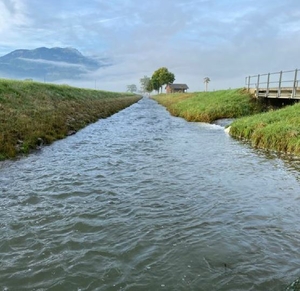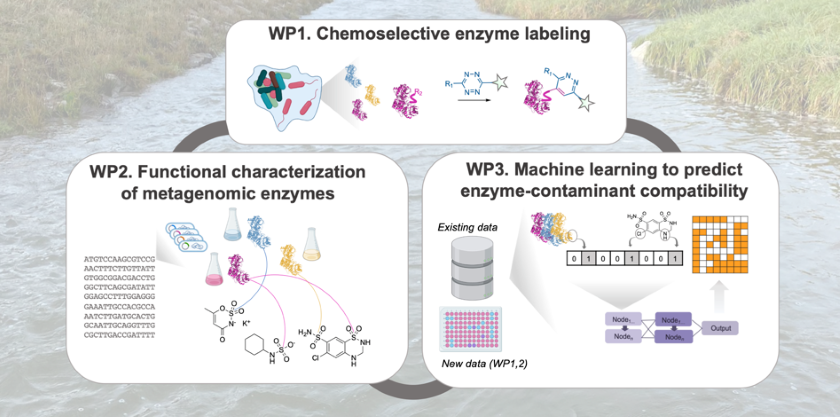Department Environmental Microbiology
Chemoselective, machine learning-guided investigation into microbial pollutant biotransformations
Microorganisms play a crucial role in the degradation of organic pollutants in the environment. Although pollutant biotransformations are of great importance to ecosystem health, we have a limited understanding of the molecular mechanisms that drive pollutant biotransformations in complex environmental microbiomes. In this study, we investigate the biochemistry of freshwater biofilms known as periphyton composed of detritus, bacteria, fungi, algae, and viruses that together perform important ecological functions (Figure 1). While periphyton pollutant tolerance has been studied in previous Eawag projects (EcoImpact 1 and EcoImpact 2), periphyton remains a ‘black box’ in terms of predicting the active microbial taxa, biochemical pathways, and enzymes interacting with organic pollutants. This project aims to characterize, model and predict enzyme families driving pollutant biotransformations in periphyton.
Content and aim of the research project
The project focuses on the key microbial players in periphyton and their biochemical parts and pathways driving the biotransformations of pollutants from wastewater treatment plant effluent. Specifically, we have three broad goals: (i) to develop methods to label enzymes that degrade pollutants in environmental samples, (ii) to characterize the enzymes responsible for these activities, and (iii) to develop predictive models to predict biotransformation of pollutants by microbiomes (Figure 2).
Scientific and social context of the research project
Our work will provide new insights into how organic pollutants are degraded in wastewater effluent-impacted freshwater biofilms. This understanding will help improve environmental assessment, modeling efforts, and monitoring of contaminant biotransformation.
Funding
Swiss National Science Foundation
Project duration
August 2023 - July 2027




